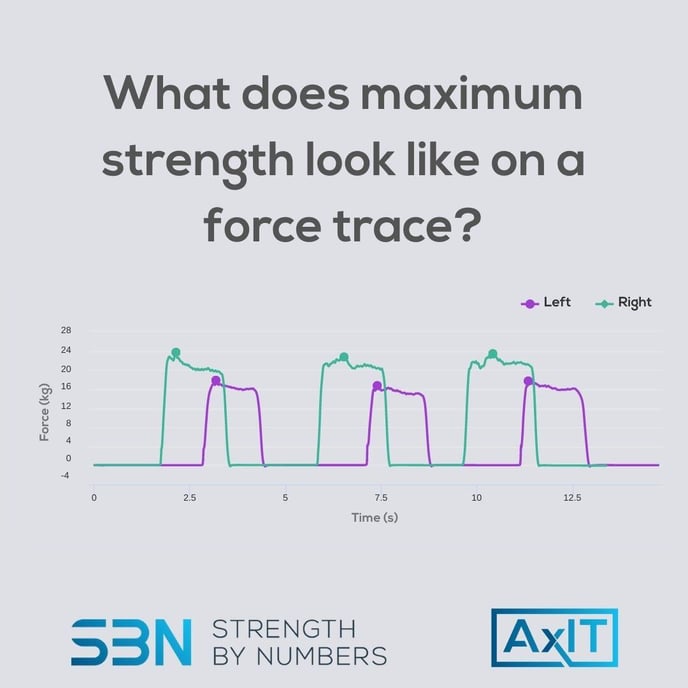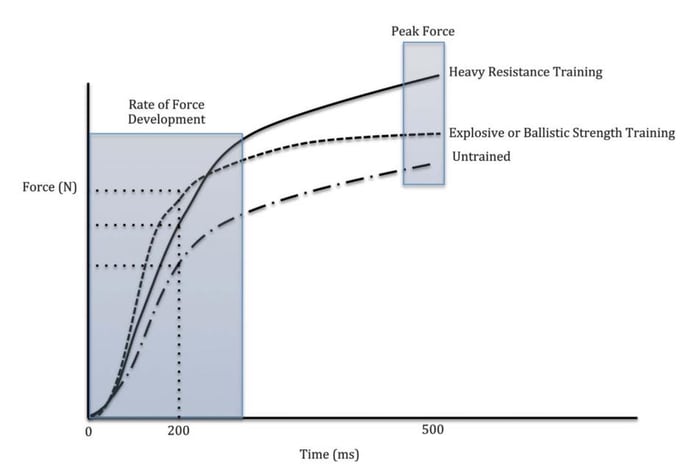What Is Peak Force?

Peak force is a representation of the maximum amount of force a client can generated during any given test. Your AxIT System will calculate this metric by taking the average peak of the visible force trace across a minimum of 3 repetitions which helps to allow for potentiation and fatigue of muscles across multiple attempts.
Peak force can be interpreted differently depending on the test type.
Isometric Tests
In isometric strength testing, peak force development refers to the maximum amount of force that a person can generate during a static muscle contraction, where no movement occurs at the joints. It provides a key measure of maximal strength capacity for a specific position or muscle group.
High Peak Force Development:
- Maximal Strength: High peak force indicates a strong ability to generate a large amount of force. This is a sign of well-developed muscular strength, often associated with high levels of muscle mass and efficient neuromuscular activation.
- Performance Indicator: Athletes or individuals with high peak force can produce stronger contractions, which is beneficial in strength-dependent activities like weightlifting, wrestling, or other sports requiring significant force output.
- Muscle and Neural Efficiency: High peak force often reflects both muscle fiber strength and the ability of the nervous system to fully activate motor units in the tested muscles.
Low Peak Force Development:
- Reduced Strength Capacity: Low peak force suggests a lower ability to generate maximal strength. This could be due to muscle weakness, underdeveloped muscle mass, or suboptimal neuromuscular efficiency.
- Injury or Recovery: A lower peak force is often seen in individuals recovering from injuries or those with conditions affecting their muscles or nervous system.
- Target for Training: Low peak force can be improved through strength training, specifically by focusing on resistance exercises to build muscle mass and enhance neuromuscular activation.
High peak force is associated with strong muscle and neural activation, while low peak force indicates weaker strength or possible injury, making it a critical measure for performance, rehabilitation, and strength training programs.

Dynamic Tests
If the movement is at a self-selected/sub-threshold speed such as a "Normal Squat Test" then Peak Force is likely representative of how the client distributes their weight when performing the movement.
If performed at maximal speed peak force is still likely a measure of performance.
Also note: high levels of peak force are not always ideal. For example, a high level of peak force on a landing test likely indicates that the client is landing very stiff and therefore is not attenuating forces well.